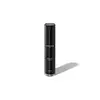What's inside
What's inside
 Key Ingredients
Key Ingredients

 Benefits
Benefits

 Concerns
Concerns

No concerns
 Ingredients Side-by-side
Ingredients Side-by-side

Water
Skin ConditioningAzelaic Acid
BufferingSimmondsia Chinensis Seed Oil
EmollientPentylene Glycol
Skin ConditioningC12-15 Alkyl Benzoate
AntimicrobialTerminalia Ferdinandiana Fruit Extract
AntioxidantGlycyrrhiza Glabra Root Extract
BleachingHexylresorcinol
AntimicrobialGluconolactone
Skin ConditioningRubus Idaeus Seed Oil
EmollientPichia/Resveratrol Ferment Extract
Skin ConditioningMorus Nigra Leaf Extract
Skin ConditioningGlycerin
HumectantArtocarpus Heterophyllus Seed Extract
BleachingPhyllanthus Emblica Extract
Skin ConditioningPolyacrylate Crosspolymer-6
Emulsion StabilisingDaucus Carota Sativa Extract
PerfumingTocopherol
AntioxidantLeuconostoc/Radish Root Ferment Filtrate
AntimicrobialCucumis Sativus Extract
Skin ConditioningSodium Benzoate
MaskingBenzoic Acid
MaskingDehydroacetic Acid
PreservativeBenzyl Alcohol
PerfumingSodium Citrate
BufferingFerulic Acid
AntimicrobialTetrasodium EDTA
Potassium Sorbate
PreservativeCamellia Sinensis Leaf Extract
AntimicrobialWater, Azelaic Acid, Simmondsia Chinensis Seed Oil, Pentylene Glycol, C12-15 Alkyl Benzoate, Terminalia Ferdinandiana Fruit Extract, Glycyrrhiza Glabra Root Extract, Hexylresorcinol, Gluconolactone, Rubus Idaeus Seed Oil, Pichia/Resveratrol Ferment Extract, Morus Nigra Leaf Extract, Glycerin, Artocarpus Heterophyllus Seed Extract, Phyllanthus Emblica Extract, Polyacrylate Crosspolymer-6, Daucus Carota Sativa Extract, Tocopherol, Leuconostoc/Radish Root Ferment Filtrate, Cucumis Sativus Extract, Sodium Benzoate, Benzoic Acid, Dehydroacetic Acid, Benzyl Alcohol, Sodium Citrate, Ferulic Acid, Tetrasodium EDTA, Potassium Sorbate, Camellia Sinensis Leaf Extract
Water
Skin ConditioningAzelaic Acid
BufferingButylene Glycol
HumectantAloe Barbadensis Leaf Juice
Skin ConditioningPropanediol
SolventCaprylic/Capric Triglyceride
MaskingKojic Acid
AntioxidantPolysorbate 20
EmulsifyingGlycerin
HumectantCaprylyl Glycol
EmollientHexylresorcinol
AntimicrobialEthyl Linoleate
EmollientLeuconostoc/Radish Root Ferment Filtrate
AntimicrobialDodecane
PerfumingHydroxyethylcellulose
Emulsion StabilisingXanthan Gum
EmulsifyingHelianthus Annuus Seed Oil
EmollientSqualane
EmollientBisabolol
MaskingGlyceryl Laurate
EmollientGlyceryl Undecylenate
EmollientAllantoin
Skin ConditioningRibose
HumectantSodium Acetate
BufferingBakuchiol
AntimicrobialGlycyrrhiza Glabra Root Extract
BleachingCellulose
AbsorbentPhenoxyethanol
PreservativeWater, Azelaic Acid, Butylene Glycol, Aloe Barbadensis Leaf Juice, Propanediol, Caprylic/Capric Triglyceride, Kojic Acid, Polysorbate 20, Glycerin, Caprylyl Glycol, Hexylresorcinol, Ethyl Linoleate, Leuconostoc/Radish Root Ferment Filtrate, Dodecane, Hydroxyethylcellulose, Xanthan Gum, Helianthus Annuus Seed Oil, Squalane, Bisabolol, Glyceryl Laurate, Glyceryl Undecylenate, Allantoin, Ribose, Sodium Acetate, Bakuchiol, Glycyrrhiza Glabra Root Extract, Cellulose, Phenoxyethanol
 Reviews
Reviews

Ingredients Explained
These ingredients are found in both products.
Ingredients higher up in an ingredient list are typically present in a larger amount.
Azelaic acid is a multitasker ingredient that helps treat acne, pigmentation, and irritation. It is a great option for sensitive skin.
What makes azelaic special?
The best thing about azelaic acid is it's gentleness. It's generally well-tolerated and safe to use alongside other actives like niacinamide or salicylic acid.
Unlike AHAs, azelaic acid will not make you photosensitive/sun sensitive.
You can find this ingredient naturally occurring in grains like wheat, rye, and barley. In cosmetics, azelaic acid is typically lab-made, which is more stable and effective.
Learn more about Azelaic AcidGlycerin is already naturally found in your skin. It helps moisturize and protect your skin.
A study from 2016 found glycerin to be more effective as a humectant than AHAs and hyaluronic acid.
As a humectant, it helps the skin stay hydrated by pulling moisture to your skin. The low molecular weight of glycerin allows it to pull moisture into the deeper layers of your skin.
Hydrated skin improves your skin barrier; Your skin barrier helps protect against irritants and bacteria.
Glycerin has also been found to have antimicrobial and antiviral properties. Due to these properties, glycerin is often used in wound and burn treatments.
In cosmetics, glycerin is usually derived from plants such as soybean or palm. However, it can also be sourced from animals, such as tallow or animal fat.
This ingredient is organic, colorless, odorless, and non-toxic.
Glycerin is the name for this ingredient in American English. British English uses Glycerol/Glycerine.
Learn more about GlycerinGlycyrrhiza Glabra Root Extract is an extract of the roots of Licorice. It has been found to have several benefits such as skin hydrating, conditioning, and soothing.
One component, glabridin, has extra potent antioxidant and soothing properties. It has also been found to block pigmentation from UVB rays in guinea pigs.
Licorice Root also contains a flavonoid. Flavonoids are a natural substance from in plants. Flavonoids also have antioxidant properties.
Another component, glycyrrhizin, has been found to have anti-inflammatory and antimicrobial benefits. This may make licorice root extract effective at treating acne. However, more research is needed to support this.
Liquiritin is one of the flavone compounds found in licorice. It has been found to help lighten skin by preventing tyrosinase from reacting with tyrosine. When the two react, protein is converted to melanin. Melanin is the substance in your body that gives your features pigmentation.
Learn more about Glycyrrhiza Glabra Root ExtractAnother popular name for this ingredient is Synovea HR. This ingredient is a skin lightener and antioxidant.
Like other skin lighteners, it blocks the process of skin darkening. Specifically, this ingredient blocks tyrosinase, the enzyme responsible for darkening skin when exposed to UV.
Hexylresorcinol works well with other ingredients. Studies show this ingredient boosts the effect of niacinamide, various forms of vitamin C, and retinoids.
Many consider this to be a safer alternative to hydroquinone. In fact, this ingredient produces the same results as hydroquinone in lower amounts.
Fun fact: This ingredient can also be found food and medicine for treating skin infections.
Gentle reminder from SkinSort: all skin tones are beautiful!
Learn more about HexylresorcinolLeuconostoc/Radish Root Ferment Filtrate is a natural preservative. It comes from fermenting radish roots with a bacteria called leuconostoc.
Leuconostoc comes from lactic acid.
This ingredient has antimicrobial properties and helps prevent the growth of bacteria in a product.
Leuconostoc is used to make the traditional Korean side-dish, kimchi. It is also used to make sourdough bread (both incredibly yummy foods).
Learn more about Leuconostoc/Radish Root Ferment FiltrateWater. It's the most common cosmetic ingredient of all. You'll usually see it at the top of ingredient lists, meaning that it makes up the largest part of the product.
So why is it so popular? Water most often acts as a solvent - this means that it helps dissolve other ingredients into the formulation.
You'll also recognize water as that liquid we all need to stay alive. If you see this, drink a glass of water. Stay hydrated!
Learn more about Water